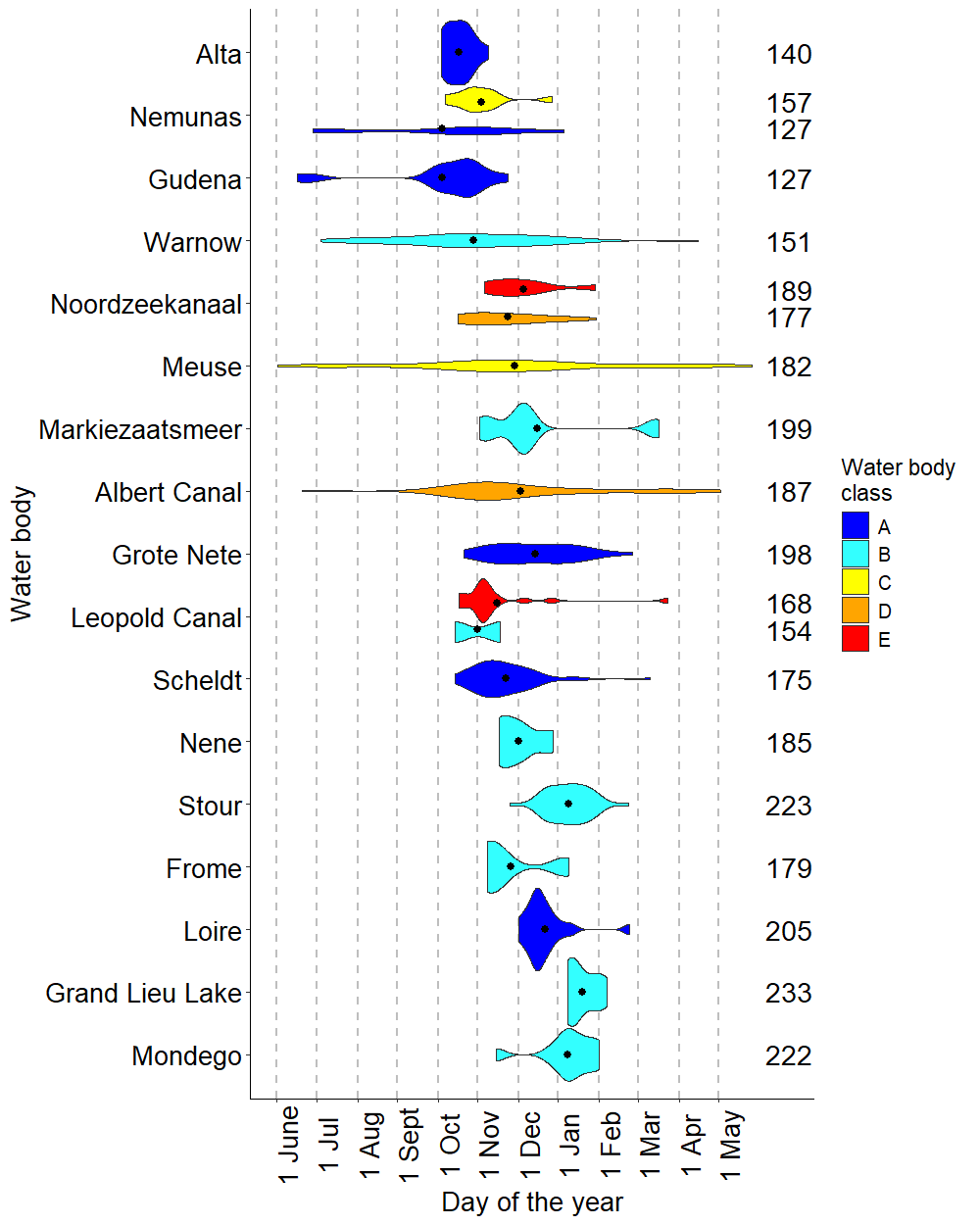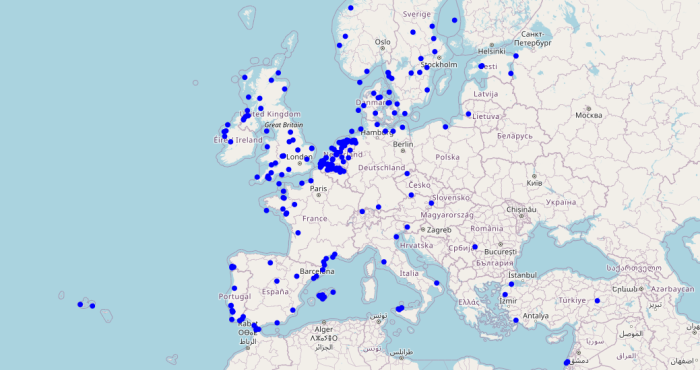From Europe to the Atlantic: new insights into eel migration

LifeWatch researchers Pieterjan Verhelst and Jan Reubens co-authored a landmark study on European eel migration, bringing together tracking data from 18 studies across 9 European countries.
The European eel (Anguilla anguilla) is one of nature’s great travelers, migrating up to 9,000 km from continental Europe and northern Africa to spawn in the Atlantic Ocean. Yet, how these eels coordinate their migration across such vast distances has long remained a mystery.
In this new study, researchers conducted the most comprehensive meta-analysis to date, combining data from 2,306 eels tracked using acoustic telemetry and the Nedap Trail System. Thanks to the collaborative efforts of LifeWatch Belgium and the European Tracking Network (ETN), data from 18 water bodies were brought together, covering a wide geographic range across Europe.
The results reveal striking patterns:
- Eels in northern Europe reach the sea on average three months earlier than those in the south.
- Migration speed differs between tidal and non-tidal habitats, with tidal currents helping eels to move faster.
- Substantial obstacles in rivers, such as pumping stations or hydropower plants, can significantly delay migration, though the impact depends on local hydrological conditions.

Eels from the north (top of the figure) depart earlier than those from the south.
These findings highlight the plasticity of eel migration and underline how environmental barriers can disrupt natural rhythms. For conservation and management of this critically endangered species, understanding such large-scale migration patterns is crucial.
LifeWatch Belgium colleagues Pieterjan Verhelst and Jan Reubens played a central role in this research, showcasing how long-term, cross-border data integration through LifeWatch and ETN can generate new insights into the lives of Europe’s migratory species.
Photo Credit Eel: Pepe Brix



